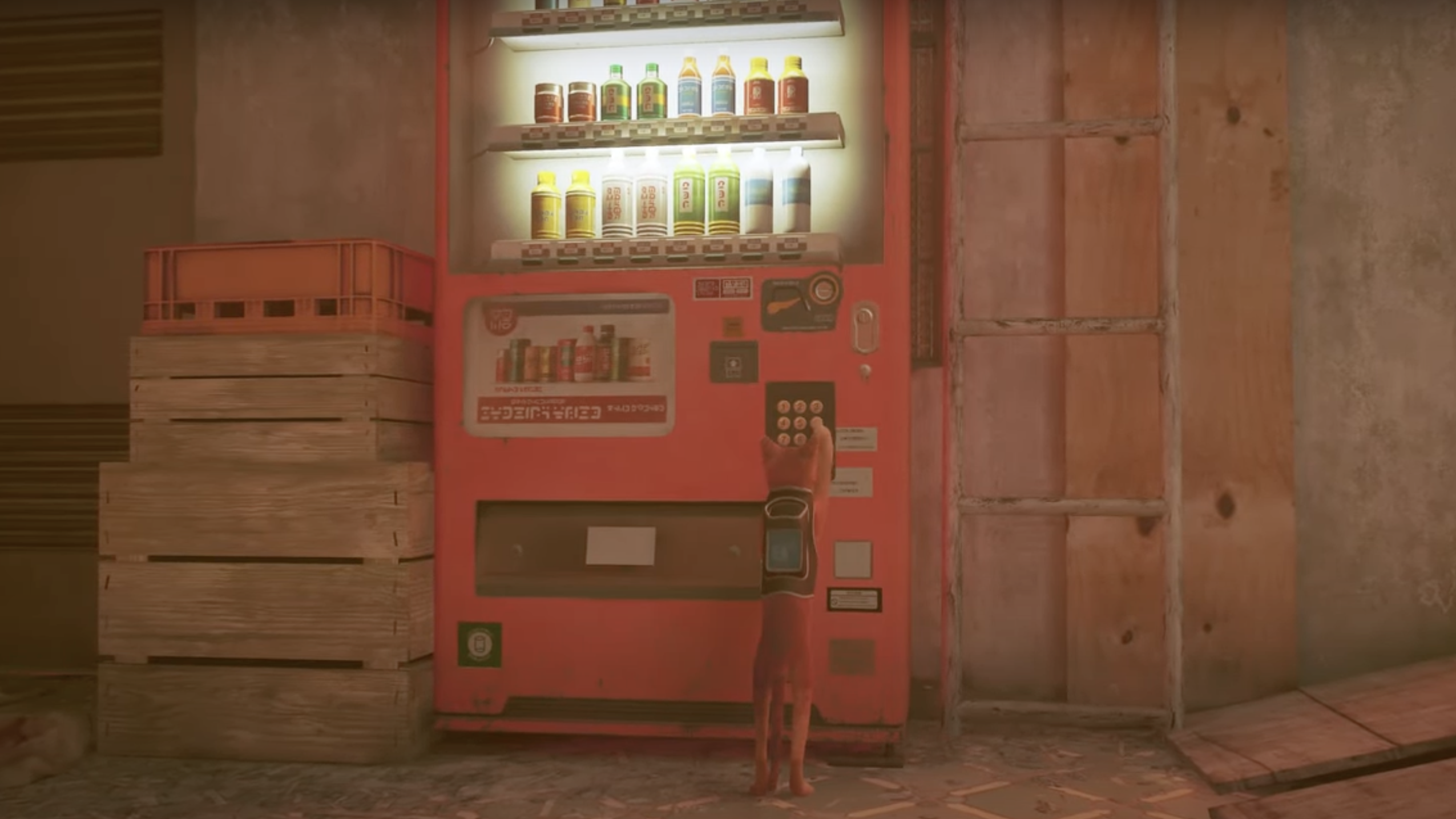Stray Reminds Us That Energy Drinks Have Always Paired With Video Games
The new hit video game points to the long history of drink and game collabs.
The new video game Stray is sweeping the nation. And why shouldn't it? Now's as good a time as any to abandon our broken reality and become immersed in a cyberpunk world in which we are a cat. The game takes you through 12 chapters as you try to escape a walled-in robot city and find your family. Along the way you solve puzzles, try to solve the mystery of how this city came to be in the first place, and befriend robots. One such robot, whom you'll meet in The Slums, sends your intrepid feline alter ego on a mission to find as many energy drinks as possible.
How to use energy drinks in Stray
Doing tasks for robots to unlock memories for your companion B12 and find new paths through the city is at the core of the game, and one shopkeeper robot accepts only energy drinks as currency. Throughout The Slums there are vending machines that stock Energy Drink Speed 2K, the coveted beverage. The search for these energy drinks also gives you a chance to explore a new level of the city you're trapped inside, with graffiti and other clues as to the game's overarching mystery. (There are plenty of gamer blogs that give you the exact locations of each vending machine.)
It may seem strange that a robot needs energy drinks, but video games are all about suspending your disbelief, so don't think about it too hard. If anything, the inclusion of these items is just one moment in a long history of the close association between energy drinks and gaming.
The connection between video games and energy drinks
There are some very specific accessories that might come to mind when thinking about a gamer: the headset for slinging insults at fellow online gamers, the giant gaming chair that is tall enough to support your neck and shoulders for hours, and, more often than not, cans of energy drinks just waiting to be chugged for the marathon session.
It's not just a stereotype. A 2014 study in the Journal of Nutrition Education and Behavior found that energy drink consumption among a group of students in grades 6-12 was directly linked to higher video game use. According to the study, students who regularly drank energy drinks were playing video games at least four hours more per week than those who didn't.
Energy drink companies have been cashing in on their association with gamers for a while. It can first be traced back to the caffeinated soft drink Bawls (which is still being manufactured and sold today, if you can believe it). After the drink was positively reviewed by a PC gaming site in 1998, the company realized it had a targeted audience to reach and went all in on video games.
In 2002, CNET reported that Bawls was sponsoring LAN parties (essentially a gathering of gamers all on separate devices but using the same local area network connection in the same place) and became the official drink of the Cyberathlete Professional League. Soon the drink started showing up in the games themselves, first in 2002's Run Like Hell and then in 2004's Fallout: Brotherhood of Steel. To this day, Bawls is the official drink of the massive LAN party QuakeCon.
In 2012, G Fuel came along with the sole purpose of being the "healthiest, most effective Energy Formula for gamers." Now it's the Official Energy Drink of Esports, beating out other popular drinks designed just for gaming, like Sneak and MTN Dew Game Fuel, not to mention energy drink giants that not only sponsor gaming tournaments but also esport athletes, like Monster and Red Bull.
Why gamers and energy drinks are a perfect pair
But why do gamers love energy drinks so much? Video games are, after all, an activity that requires almost no physical movement. Some players claim that the energy drinks make them better at gaming. In a 2015 New York Times article, one gamer says that drinking G Fuel helped him raise his batting average on an MLB video game. According to GScience, most gamers rely on these highly caffeinated beverages to improve their cognitive performance; it ostensibly makes the drinker more fatigue-resistant, an important quality when your eyes are glued to a screen for hours on end.
Still, it's important to remember that these drinks can be dangerous and that companies are slowly starting to put more and more caffeine in each can. And perhaps not every game benefits from having its players hopped up on Monster. Much of the praise of Stray, for example, calls it a fairly calming game that might not quite require the laser focus of the Adderall-like high that energy drinks can provide. While energy drinks will certainly remain intertwined with gamer culture, perhaps it's best to relegate them to their on-screen representation in Stray: fuel for robots, not for humans.
